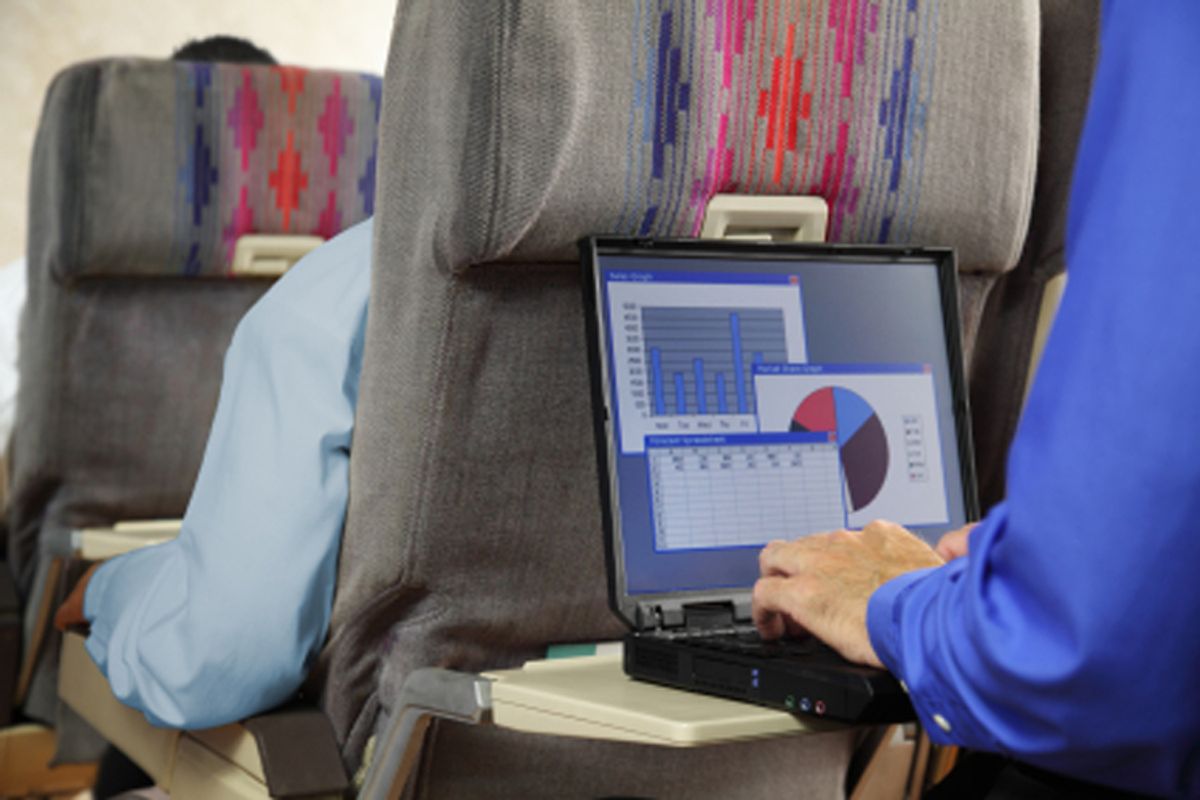Covering the recent taxiway collision at Kennedy airport between an Air France A380 and a regional jet, I emphasized the importance of staying seated after landing.
Perhaps the most important take-away, I wrote, is paying heed to that old, in-one-ear-and-out-the-other dictum from the flight attendants: Please remain seated with your seat belts securely fastened, until the plane is parked at the gate and the seat belt sign has been turned off.
Well, maybe, but a reader from Seattle wrote in with an interesting comment, pointing out the airlines' contradictory enforcement policies when it comes to the seat belt sign. On the ground, taxiing along at only a few miles per hour, the rule is enforced with a certain ferocity, as anybody who has mistakenly reached for his carry-ons after landing can attest. During flight, on the other hand, it's hit or miss. People amble about, to and from the lavatories, regardless of what the sign says. More often than not, nobody seems to mind.
If you ask me, this is mostly the result of crews being overly zealous with the sign in the first place. The first nibble of turbulence and DING, on it comes, and often it remains illuminated long after things have smoothed out. The effect of this, of course, is that people no longer pay attention.
To be clear, I am in no way suggesting that you ignore the sign, or any other crew member's instructions. Even when conditions are silky smooth, rough air could be looming ahead. This is especially true when flying at night through equatorial regions and the Intertropical Convergence Zone, the menaces of which I described here. And remember that turbulence is fickle and unpredictable. Even with all the tools at our disposal, from radar to real-time reports from other flights, we don't always know where the roughest air will be or how long it might last.
However, both despite and because of such hazards, I wish that certain of my colleagues were more discerning with the chimes.
We could also do better with the public address announcements that accompany those chimes. Too many of them are long-winded and rattled off in a high-speed mumble that at times is unintelligible:
"UhfolkslooksliketheremightbesomebumpsupaheadsoI'mgonnaputtheseat beltssignonpleasereturntoyourseatsandfastenyourseatbelts."
To many passengers' ears this comes across as: "I'm saying this, but I don't really mean it or care."
My own turbulence P.A. is short and sweet. If conditions are unusual or there's specific information, I'll be more detailed, but usually it goes like this: "Seat belts, please. Thank you." Some of you might feel this is curt, and runs the risk of making nervous fliers even more nervous. Still, I think it's better. If a seat belt directive is really about safety, it needs to be taken seriously. People pay closest attention to language that is clear, concise and polite.
For what it's worth, carriers outside the United States tend to be more judicious with their dings. Why this is I can't say for sure. Part of it, perhaps, is that distinct American obsession with safety -- our tendency to get nervous and jittery over almost anything -- and our inherent fears of litigation. Ultimately this comes back to bite us. A too-liberal policy is indeed a risky one; on the other hand, an extreme better-safe-than-sorry mentality can actually increase the likelihood of somebody getting hurt.
By the way, the rear cabin tends to be more susceptible to bumps than the front. Now and then the flight attendants will call from the back -- where things might be swaying and banging more than we realize -- and request that the sign be switched on. If you're one of those fliers who is easily upset by turbulence, your best bet is a seat over or close to the wing.
For more on the facts and fallacies of turbulence, click here.
- - - - - - - - - -
GO-AROUNDS
Re: Air France black box recovery
"As one who makes his living recovering things both on and under the sea, I would appreciate a bit more laudatory term than 'dredged' for describing the near-impossible feat of locating aircraft wreckage two miles below the surface and the spectacular retrieval of the black boxes." -- Mike Bullock
Author's comment: Fair enough, considering how jumpy I get at certain characterizations of pilots.
Re: Streaming data in lieu of traditional black boxes
"Much as you don't want me writing about airplanes, I don't want you writing about technology. If, as you say, there are 256 indicators, it would be possible to represent each measurement with four bytes of data (one byte to denote the measure and three for data). Thus a full set of data would only require 1KB. While you’re over land, you can easily make use of cell towers to send this data (like how GoGo in-flight Wi-Fi works). That's basically free. While over water or remote areas, you could use satellite, which for this much data would certainly cost less than $1/minute. Maintenance folks could get automated alerts that systems were starting to behave in suboptimal ways." -- Ben Gawiser
Author's comment: Perhaps I -- and Christine Negroni, whose quote I used -- stand corrected on the bandwidth issue. Regardless, I'm not sure if this idea is cost-effective or particularly useful when you consider how infrequently black box data is lost or unrecoverable. With respect to those satellite costs, a dollar a minute is still an awful lot when you're operating hundreds of long-haul flights daily. As for maintenance, many modern aircraft do already send wireless updates of the status of onboard systems.
- - - - - - - - - - - -
Do you have questions for Salon's aviation expert? Contact Patrick Smith through his website and look for answers in a future column.

Shares